|
Display Week 2015's Symposium
includes a special track on Vehicle Displays & Trends, featuring invited
papers covering the various areas of vehicle displays. This focused track
will bring together scientists, engineers, business professionals, market
analysts, academics, and industry leaders pioneering vehicle display
technologies and applications.
Admission to this track is included when purchasing admission to the
symposium, or one can buy admission to the vehicles track only at a lower
rate.
|
|
Plenary Talk
Evolution of Automotive
Displays and HMI: Past, Present, and Future
Peter Knoll
Bosch, Gerlingen, Germany
Thursday, June 4
8.30 – 9.00am
|
In former times only a few
gauges were necessary to survey a vehicle’s functions. Current and future
concepts bundle the huge amount of information coming from new
driver-assistance systems in three information centers: a reconfigurable
instrument cluster and a head-up and a center console display in conjunction
with appropriate operating techniques.
|

|
|
Session 41 :
Automotive Display
Applications and Systems
|
Chair:
M. Larry, Ford Motor Co.

|
Chair:
R. Rao, Harman International
|
|
41.1
Development of RGBW LCD with Edge-lit 2D Local-Dimming System for Automotive Applications
Naoyuki Takasaki,
Japan Display, Inc. Ebina Japan
Thursday, June 4 / 9.00-9.20am
|
A 10-in. RGBW LCD with an
edge-lit 2D local-dimming backlight system for automotive applications has
been developed. This prototype system exhibits a reduction in power
consumption of 41.5% compared to that of a conventional RGB display without a
local-dimming backlight. The performance and evaluation results will be
described.
|

|
|
41.2:
High-Reliability Integrated
Gate Driver Circuit in a Panel for Automotive Displays
Dayhe Shim
LG Display Co., Ltd.,
Gyeonggi-do, South Korea
Thursday, June 4 /
9.20-9.40am
|
Automotive displays require
high reliability for long-term usage and a wide operation temperature range.
A new a-Si:H integrated gate driver circuit, where the self-compensation
transistors are intentionally added to stabilize the bias conditions at the
extreme environment, is proposed. This improves the reliability of the
automotive display.
|
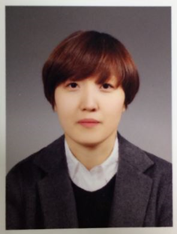
|
|
41.3:
Invited Paper: Megatrends
Driving Automotive Displays and Associated Mega Issues
Paul Russo
GEO Semiconductor, Inc., San
Jose, CA, USA
Thursday, June 4 /
9.40-10.00am
|
The accelerating growth in
the use of advanced electronic safety, convenience, and semi-autonomous
driving systems in automobiles will generate massive amounts of information
that must be conveyed to drivers. Displays are evolving rapidly to provide
this information in safe and efficient ways. Automotive displays will
increasingly resemble airplane cockpits. From reconfigurable large-area
high-resolution LCDs to HUD systems offering increasing content while the
drivers’ eyes remain focused on the road, new classes of displays will become
the norm to allow drivers to easily absorb the critical information being
generated. Challenges associated with these display transitions will also be
discussed.
|

|
|
41.4:
Invited Paper: Future
Car HMI Innovations
IP Park
Harman International,
Stamford, CT
Thursday, June 4 /
10.00-10.20am
|
There will be more and more
computers in cars: built-in, brought-in, worn, etc. These computers want to
interact with us (and we with them). If not designed and engineered
appropriately, the user interfaces between us and these computers will become
more complex—and more distracting.
What is needed is careful
attention to the interaction methods, or HMI.
Changes to the HMI cannot be
just incremental, but have to be dramatic.
This talk will cover recent
developments that can be game-changing for
in-car HMI.
|

|
|
Session 47 :
Next-Generation Automotive
Display Technologies I: HUDs
|
Chair:
R. Rao, Harman International,

|
Co-Chair:
M. Suzuki, SKC Haas Display Films
|
|
47.1:
Invited Paper: Practical
Application of TI DLP® Technology in the Next-Generation Head-Up Display
System
Jason Thompson
Texas Instruments, Plano, TX,
USA
Thursday, June 4 /
10.40-11.00am
|
Next-generation automotive
head-up displays (HUDs) could fundamentally change how OEMs utilize the HUD.
A significantly larger virtual display area and vastly improved image quality
are two of the many benefits. Along with the benefits come a unique set of
challenges, which can be addressed by incorporating TI DLP® solutions.
Options for these challenges, including the comparison of different
solid-state illumination sources, have been explored, and practical solutions
for developers will be offered.
|

|
|
47.2:
Invited Paper: Laser-Scanning
Head-Up Display for Better Driving Assistance
Koichiro Nakamaura
Ricoh Co., Ltd., Yokohama,
Japan
Thursday, June 4 /
11.00-11.20am
|
As advanced
driving-assistance systems pervade automobiles, drivers are exposed to more
information than ever before. Head-up displays are expected to provide the
necessary contents depending on necessity and urgency. The promises and
challenges of the technology will be discussed.
|

|
|
47.3:
Invited Paper: World-Fixed
Augmented-Reality HUD for Smart Notifications
Mainak Biswas
Qualcomm, San Diego, CA, USA
Thursday, June 4 /
11.20-11.40am
|
A head-up display (HUD)
system that displays perspective-correct surrounding information for driver
safety will be presented. In the implementation, contrast-enhanced ego lane
information on the HUD is displayed during driving conditions with poor
visibility. The use of HUD for augmented-reality (AR) needs an accurate model
of the picture-generation process for proper visualization of the 3D content
that is perspective accurate from the user view point. The system uses
multiple computer-vision techniques for the accurate visualization.
|

|
|
47.4:
A Novel Full-Windshield
Heads-Up Display (FWD) Technology
Ted Sun
Sun Innovations Inc Fremont
,CA USA
Thursday, June 4 /
11.40-12.00pm
|
Sun Innovations has developed
a full-windshield head-up display (FWD) system for automotive applications.
This revolutionary display device is based on a projection-based fluorescent
display (PFD) technology which is a new concept of forming full-color and
emissive images on an optical clear and fluorescent substrate by projecting
light at multiple UV/blue wavebands. With the FWD, information such as GPS
navigation signs, on-road obstacles detected by a night-vision camera,
warnings from on-board sensors, as well as many other types of
mission-critical information can be graphically displayed anywhere on the
windshield without any limitation of view angles. FWD will also enable
advanced augmented-reality applications over the entire windshield.
|
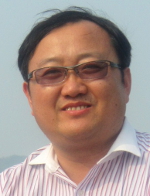
|
|
Session 53 :
Touch, Interactivity, and
Human-Machine Interface
|
Chair:
Thomas Seder, General Motors

|
Co-Chair:
Akihiro Tagaya, Keio University

|
|
53.1:
A 10.0-in. 1080 x 2880
Capacitive Curved-Face In-Cell Touch Panel for Automotive Use
Taiki Kasai
Japan Display,
Inc., Tokyo, Japan
Thursday, June 4 /
1.30-1.50pm
|
A 10.0-in. 1080 × 2880
capacitive curved-faced prototype LCD for automotive use, which has
integrated in-cell touch panel technology, will be described. A sufficient
signal-to-noise ratio of 100–160 was achieved with this display despite the
1.1-mm-thick cover glass.
|

|
|
53.2:
Visual Search and Attention:
What Eye-Tracking Reveals about Visual Performance in the Curved Display
Hyeon-Jeong Suk
KAIST, Daejeon, South Korea
Thursday, June 4 /
1.50-2.10pm
|
For flat and curved displays,
the subjective impressions of quality were measured, and the eye gaze to a
variety of video content was tracked.
There was a subjective preference for curved displays, but eye-gaze
analysis revealed no statistically significant differences in number or
duration of eye fixations.
|

|
|
53.3:
Invited Paper: Creating a
Compelling Touch Experience
Chad Sampanes
Immersion Corp. San Jose, CA,
USA
Thursday, June 4 /
2.10-2.30pm
|
Car infotainment systems now
offer a larger variety and a more complex set of use cases than ever. Haptics
have the potential to improve safety, utility, and user experience of these
touch-based systems. Some of the design issues will be covered, and how to
create compelling haptic experiences will be discussed.
|

|
|
53.4:
Metal-Mesh Design For
High-ppi LCD Application
Chun-Chi Chen
Gerneral Interface Solution,
Ltd., Miaoli, Taiwan, ROC
Thursday, June 4 /
2.30-2.50pm
|
Metal-mesh technology offers
low RC loading in touch panels and curved touch LCDs, as well as low cost.
For high-resolution displays (>530 ppi), moire patterns due to
interference with the TFT-LCD can be a significant problem. Methods to solve
the visibility issue of moire patterns for touch displays, including curved
touch LCDs, will be described.
|
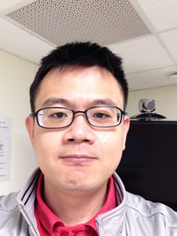
|
|
Session 59:
Next-Generation Automotive
Display Technologies II: Flexible, Curved, Coatings
|
Chair:
Paul Drzaic, Apple, Inc.

|
Co-Chair:
Takatoshi Tsujimura, Konica Minolta
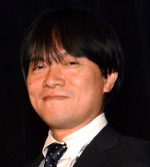
|
|
59.1:
Invited Paper: Flexible
Flat-Panel-Display Designs with Gate Driver Circuits Integrated within the
Pixel Area
Hidefumi Yoshida
Sharp Corp., Nara, Japan
Thursday, June 4 /
3.10-3.30pm
|
A new stylish TFT-LCD has
been developed, where gate-driver monolithic circuits were placed in the
pixel area. Because there are no electronic circuits in the frame area, a
narrow border and round corners or a multi-concave shape can be
simultaneously realized.
|
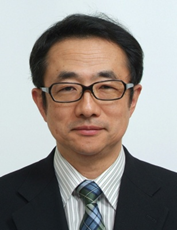
|
|
59.2:
Highly Stable and Transparent
Oxide TFTs for Rollable Displays
Jin, Jang
Kyung Hee University Seoul
South Korea
Thursday, June 4 /
3.30-3.50pm
|
Highly stable oxide-TFT
circuits with a visible-light transmittance of ~70% and rollable to cylinders
with a radius of 2 mm were demonstrated on solution-processed colorless
polyimide. Carrier glass and a special de-bonding layer were used during
fabrication. Stable TFT and circuit performance were achieved under
positive-bias and mechanical bending stress.
|

|
|
59.3:
Functional Transparent
Coatings for Displays
Songwei Lu
PPG Industries, Inc., Allison
Park, PA, USA
Thursday, June 4 /
3.50-4.10pm
|
Optical functional coatings
have been spray deposited onto a pre-treated glass surface followed by a
low-temperature curing at 150°C. Such coatings exhibit excellent steel-wool
wear durability and low coefficient of friction. The coating has gloss values
between 50 and 100, pencil hardness > 8H, and exhibits no sparkling.
|

|